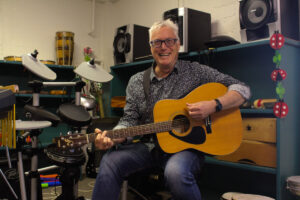Hamilton charter school exhibits talents amid turmoil
Hamilton’s Te Kōpuku High showcases a terms efforts
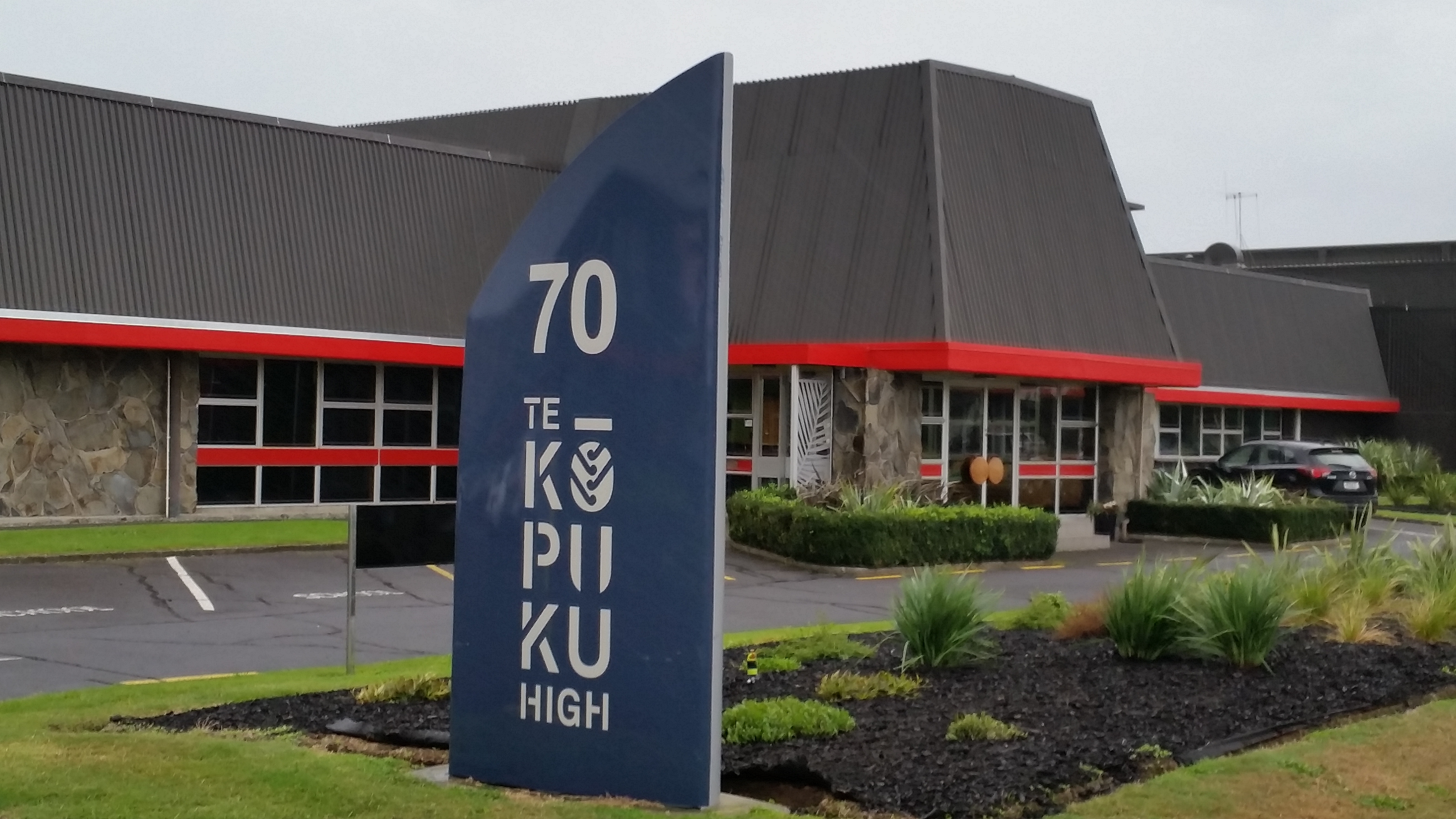
Hamilton charter school Te Kōpuku High may be doomed by new Government policy but you wouldn’t know it from the buzz around its exhibition, held on April 9, to showcase students’ term one work.
Education Minister Chris Hipkins has said, “The government’s strong view is that there is no place for them [charter schools] in the New Zealand education system.”
Tumuaki (chief executive officer) Cath Rau is continuing with “business as usual” and project-based learning is the norm. For 10 weeks mokopuna (students) applied curriculum elements to electives.
“We like to take a projects-based approach as a way of authenticating the kids’ learning. Sometimes it makes more sense around maths and language when it’s actually embedded in a context that they understand,” Rau said.

The exhibition resulted in an array of creations, from tipare (Māori headbands) to electric bikes.
“Most of the projects are a combination of either science, technology, engineering and the arts all underpinned by a design process,” Rau said.
Te Kōpuku values sustainability. A paddle board using readily available materials and two motorised bicycles fit that bill.
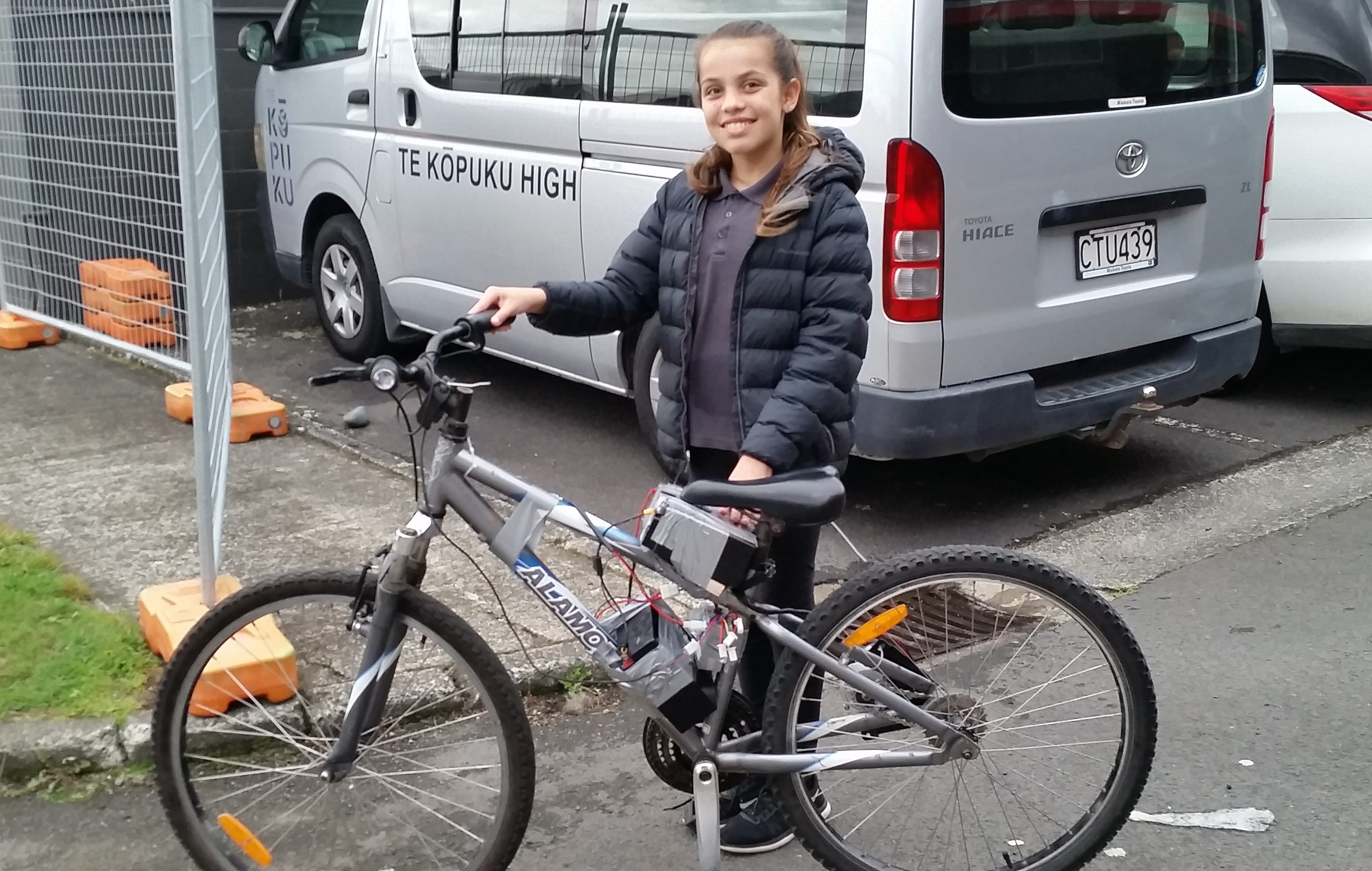
Jade Gray, year 9, worked with five others to convert a bike into a motor-machine.
The ‘EVolocity’ group took part in a ‘design, build, complete’ programme and configured the necessary components from a motor to a throttle to attaching two 12-volt batteries to the frame.
“These mokopuna have motorised these bikes. They know how to strip them right down to the carcass and put them all back,” Rau said.
Mokopuna Jade said, “I had to learn all the electrics. I was the electrician.”
It took about a week to get going but it was “awesome” once it ran, the student said.
Last year’s Te Kōpuku EVolocity squad went on to represent Waikato at a national electrically powered vehicle event.
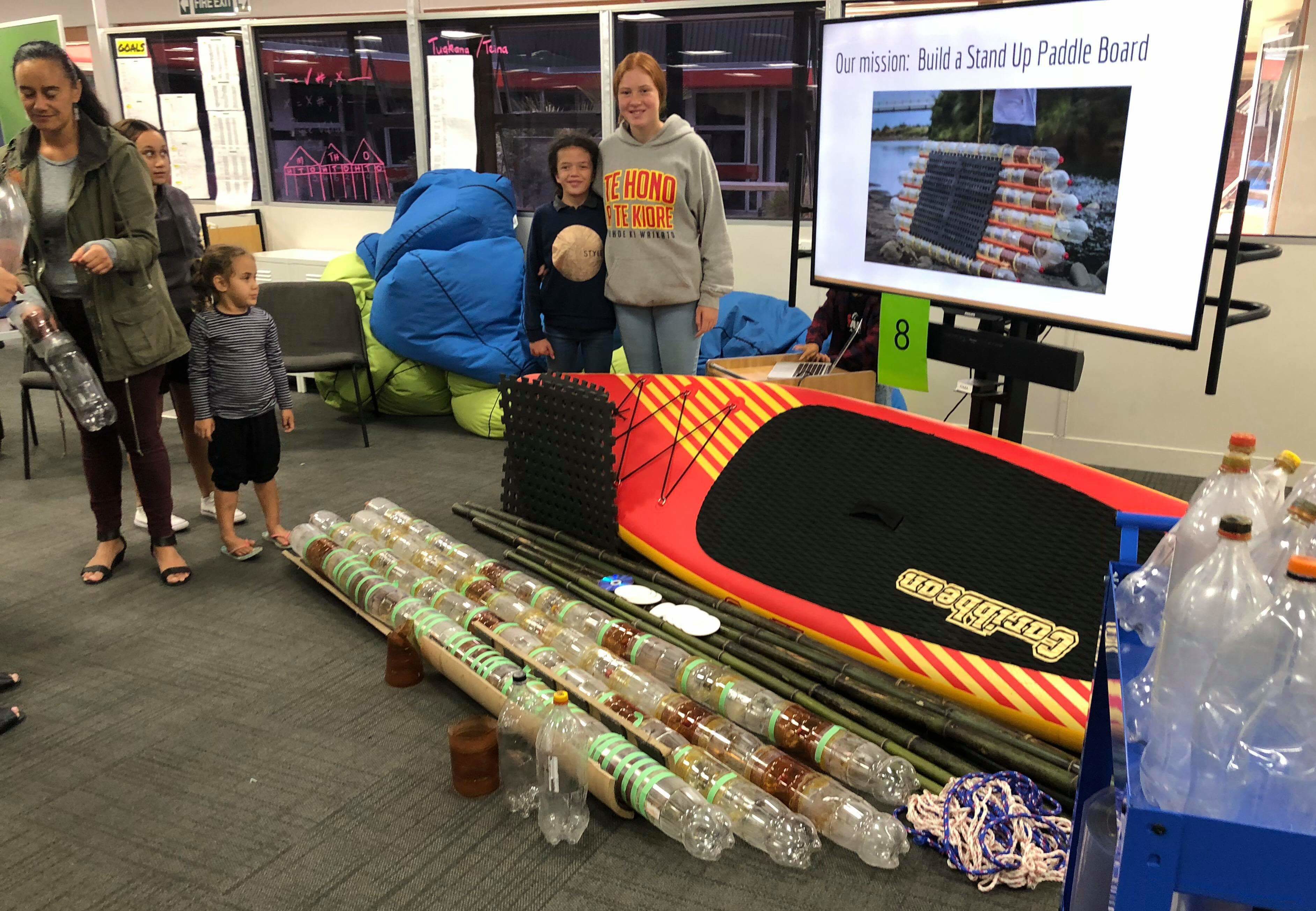
Year 9 paddle board crafters, Morgan Charlton and Riley Barrett, worked with a team and took direction from Brazilian couple Nathalia and Thiago Cagna’s New Plymouth model.
As part of the process the PBL group went to Raglan to trial ordinary boards. “I learnt to surf that day,” Riley said.
The bottle-board, still in progress, consists of bottles filled with dry ice for buoyancy glued together with compact disc “fins”. Once finished the wave-riders will return to Raglan to test their creation.
Riley liked seeing the bottles “explode high” when injected with dry ice and the hardest part was finding 96 fizzy bottles.
“Getting the resources took a while but the people were nice to let us take all their 2.25 litre bottles,” the mokopuna said.
Learning facilitator Lovey Chapman said the school’s wai (water) theme led to the group’s choice.
“There is too much plastic in our oceans. This is about raising awareness,” Chapman said.
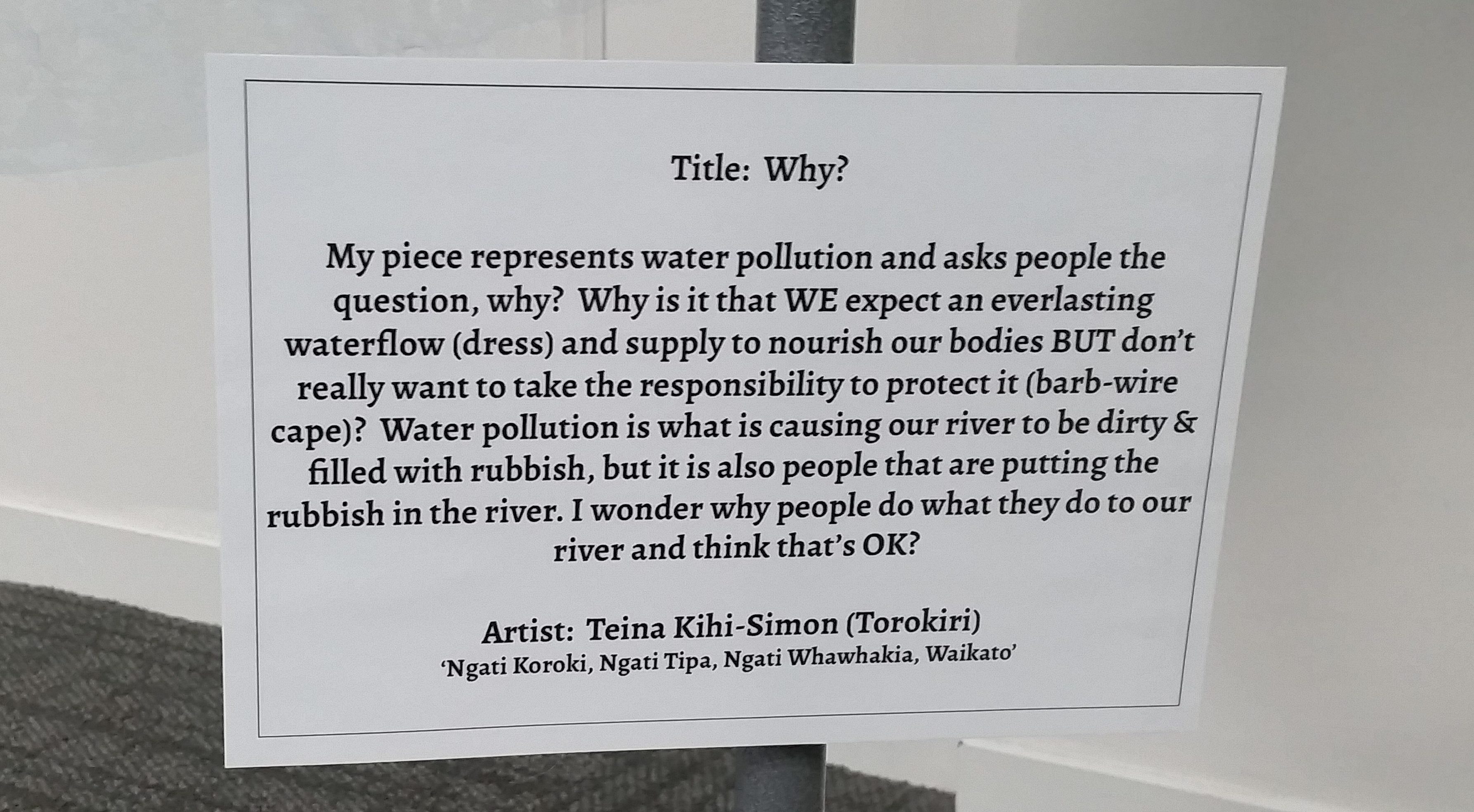
Exhibition attendee and Morgan’s mum, Marcia Ranginui Charlton, said: “Te Kōpuku is a kura that approaches each mokopuna as a unique individual with both strengths and learning needs. They tailor the programme to meet those needs.”
Of the school’s charter model Marcia said, “we love Te Kōpuku. It gives our girl confidence and she actually wants to go to school.”
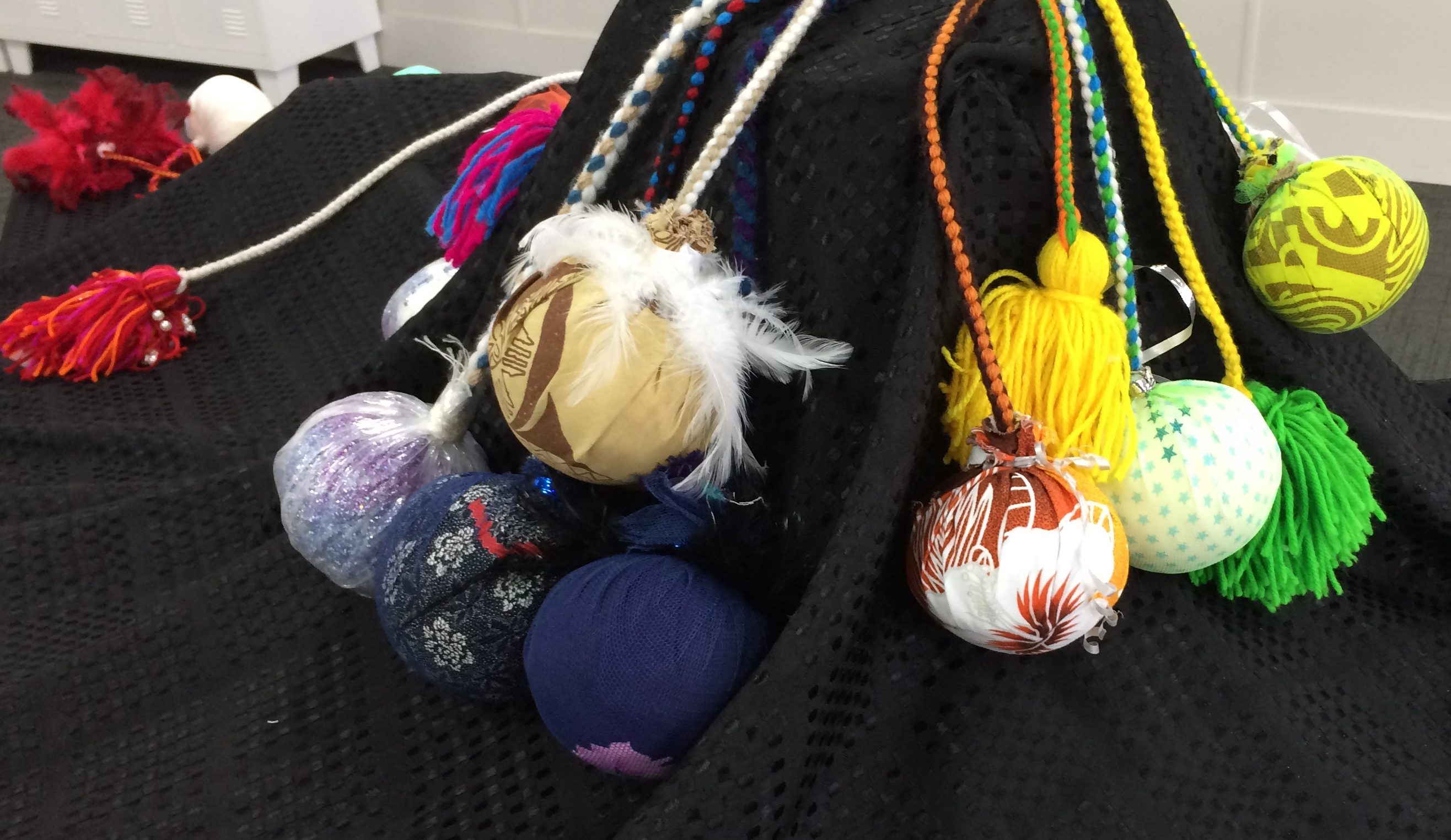
Te Kōpuku joins 10 charter schools with unclear fates following the Government’s legislation change. The institutions have until May 1 to submit applications to transition into the state school system or face closure.


